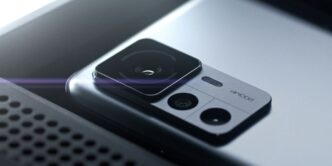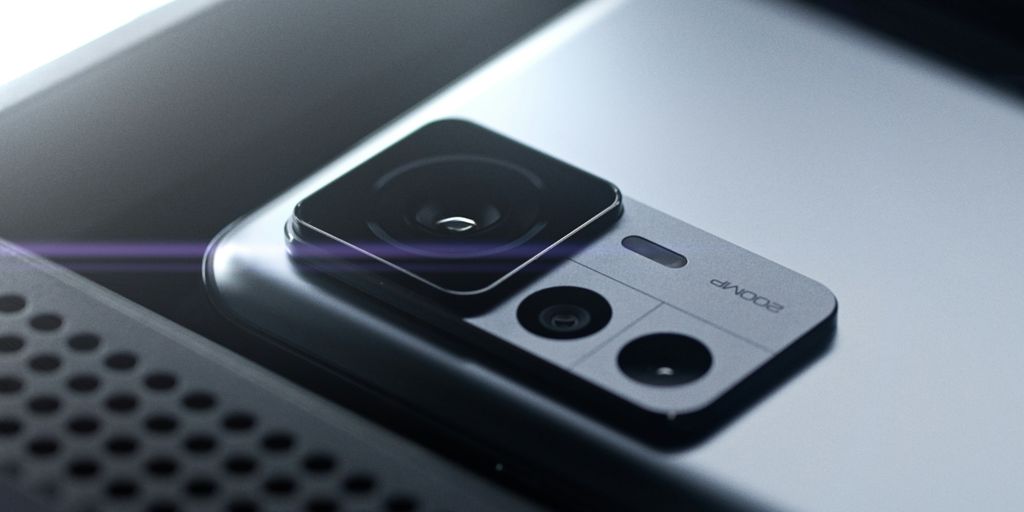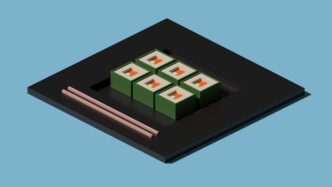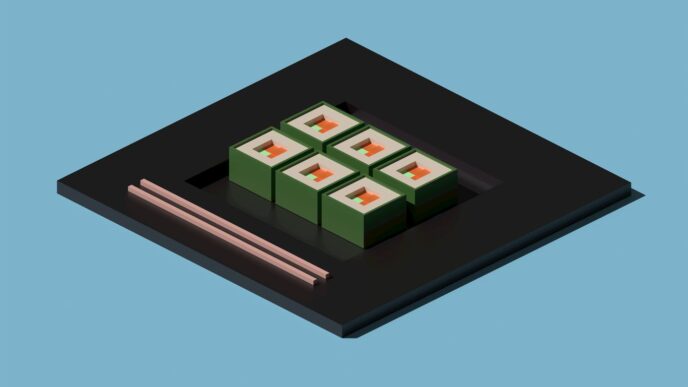Smartphones have changed a lot over the years, but it feels like we’re at a point where the next big change isn’t just about a better screen or camera. It’s about how these devices fit into our lives in totally new ways. We’re talking about a future where your phone isn’t just a thing you hold, but more like a part of everything around you. This article will look at where this innovation smartphone journey is taking us, and it’s pretty interesting stuff.
Key Takeaways
- Smartphones are becoming less about just the device itself and more about how they connect with everything else around us.
- Future phones will have super advanced sensors that can understand and react to the real world in real-time.
- We might see smart glasses and AI systems take over some of what our phones do now, moving beyond touchscreens.
- Artificial intelligence and augmented reality will make our devices much smarter, helping us in new ways, like seeing directions right in front of our eyes.
- Connecting devices will get even better with new communication tech, making sure everything talks to each other smoothly.
The Evolution Beyond the Handheld Device
Smartphones have been the thing for a while, but it’s pretty clear things are changing. It’s not just about bigger screens or faster processors anymore. The focus is shifting to how our phones interact with everything around us, and how we interact with them.
Shifting Focus to Environmental Interaction
It’s not just about what’s on the screen anymore. Smartphones are starting to pay attention to their surroundings. Think about it: your phone already knows your location. Now, imagine it knowing the air quality, the noise level, or even the pollen count. This data can be used to give you personalized recommendations, like suggesting a different route to avoid traffic or alerting you to potential health hazards. It’s about the phone becoming more aware of its context and adapting to it.
The Rise of Wearable-First Interfaces
Who says you need to pull out your phone for everything? Wearables are becoming more capable, and they’re changing how we interact with technology. Smartwatches, fitness trackers, and even smart glasses are offering new ways to access information and control our devices. Instead of reaching for your phone to answer a call, you can just tap your smartwatch. It’s about moving away from the phone as the only interface and embracing a more distributed approach.
Smartphones as Part of a Larger Ecosystem
Your phone isn’t an island. It’s part of a larger network of devices and services. Think about how your phone connects to your smart TV, your smart speakers, and your smart home devices. It’s becoming a central hub for controlling everything around you. This ecosystem is only going to grow, with more and more devices becoming connected. The smartphone is evolving into a key component of a much bigger picture, acting as a mobile computing remote control for your life.
Here are some examples of how smartphones are integrating into larger ecosystems:
- Smart Home Control: Adjusting lights, temperature, and security systems.
- Automotive Integration: Controlling car functions, navigation, and entertainment.
- Healthcare Monitoring: Tracking vital signs and managing medication schedules.
Next-Generation Sensory Capabilities
Smartphones are about to get a whole lot more aware of what’s going on around them. It’s not just about taking better pictures; it’s about understanding the environment and responding to it in useful ways. Think of your phone as becoming less of a simple tool and more of a sixth sense.
Real-Time Environmental Tracking
Imagine your phone constantly monitoring air quality, temperature, and even pollen levels. This data could be used to provide real-time alerts for allergies or suggest the best time for outdoor activities. It’s like having a personal weather station and environmental monitor all rolled into one. This could be a game-changer for people with health sensitivities. The mobile application market will likely see a surge in apps that utilize this data.
Advanced Camera Software and NFC Features
Cameras are already amazing, but they’re about to get even smarter. Expect camera software that can identify objects, translate text in real-time, and even provide information about what you’re looking at. Near-field communication (NFC) will also play a bigger role, allowing for quick and easy data transfer, payments, and even access to secure locations. It’s not just about megapixels anymore; it’s about what the camera can do.
Integration of Biometric Sensors
We’re already seeing fingerprint scanners and facial recognition, but the next wave of smartphones will likely include even more advanced biometric sensors. Think heart rate monitors, blood oxygen sensors, and even sensors that can detect stress levels. This data could be used to provide personalized health recommendations, track fitness progress, or even alert emergency services in case of a medical event. It’s all about turning your phone into a powerful health and wellness tool. The future of mobile computing is looking very healthy indeed.
The Dawn of the Post-Smartphone Era
Okay, so smartphones have been the thing for a while now. But let’s be real, are we really going to be glued to these rectangles forever? A lot of people in tech are betting against it. We’re starting to see the very early stages of what could replace them. It’s not going to happen overnight, but the shift is definitely on the horizon. The reign of the smartphone is slowly coming to an end.
Smart Glasses as the Successor
Mark Zuckerberg and others are really pushing for smart glasses to be the next big thing. Think about it: hands-free access to information, augmented reality experiences overlaid on the real world… it’s a pretty compelling vision. It’s not just Zuck, either. Lots of companies are working on this, trying to create something that’s actually stylish and useful, unlike some of the clunky attempts we’ve seen in the past. The idea is that instead of constantly pulling out your phone, you’d just glance at something and get the information you need.
AI-Powered Ambient Agent Systems
Beyond just glasses, there’s this whole idea of ambient computing. Basically, AI that’s always around, anticipating your needs and helping you out without you even having to ask. Imagine a system that knows your schedule, your preferences, and can proactively manage your day. It’s like having a super-efficient assistant that lives in the background. This could take the form of smart speakers, wearable devices, or even just software that runs on all your devices. The goal is to make technology fade into the background and become truly seamless. It’s all about ambient agent systems that are intuitive.
Overcoming Touchscreen Fatigue
Let’s face it, swiping and tapping all day can get old. Touchscreens are great, but they’re not always the most efficient or natural way to interact with technology. Plus, they force you to look down at a screen, which isn’t great for posture or situational awareness. That’s why there’s so much interest in alternative input methods like voice control, gesture recognition, and even brain-computer interfaces. The goal is to find ways to interact with technology that are more intuitive, less physically demanding, and more integrated with our natural movements and senses. People are getting tired of touchscreen fatigue, and the industry is responding.
Artificial Intelligence and Augmented Reality Integration
AI and AR are becoming deeply intertwined in smartphones, moving beyond simple features to create more immersive and helpful experiences. It’s not just about adding fancy filters anymore; it’s about fundamentally changing how we interact with the world around us through our phones.
Intelligent Personal Assistants in Your Vision
Imagine your phone’s assistant, but instead of just responding to voice commands, it anticipates your needs and provides information directly in your field of vision. This is the promise of AI-powered AR: a truly proactive and personalized experience. Think about walking into a coffee shop and seeing a small, unobtrusive overlay telling you about today’s specials or your friend’s favorite drink. It’s about having the right information, at the right time, without having to ask for it. Apple is already incorporating its Apple Intelligence into every device. But glasses are the perfect vehicle: they make AI ambient, contextual, and passive.
Digital Overlays for Real-World Objects
AR allows us to overlay digital information onto the real world, creating interactive and informative experiences. This could range from simple things like seeing restaurant reviews when you point your camera at a building, to more complex applications like visualizing furniture in your home before you buy it.
- Imagine pointing your phone at a historical landmark and seeing a digital reconstruction of what it looked like centuries ago.
- Or using AR to get step-by-step instructions for repairing your car engine.
- Or even playing a virtual game that blends seamlessly with your physical surroundings.
These are just a few examples of the possibilities that AR unlocks.
Seamless Information Delivery
One of the biggest challenges with current smartphones is the constant need to look down at the screen. AR has the potential to change that by delivering information in a more natural and intuitive way. Instead of constantly checking your phone for directions, imagine seeing arrows overlaid on the street, guiding you to your destination. Instead of searching for information about a product, imagine simply pointing your phone at it and seeing all the details appear in front of you. This seamless information delivery could free us from the tyranny of the screen and allow us to engage with the world around us in a more meaningful way.
Interconnectivity and Communication Protocols
Okay, so smartphones aren’t just about being a phone anymore, right? It’s all about how they connect to everything around us. Think about it – your phone talks to your headphones, your car, your TV, and even maybe your fridge someday. It’s a whole web of connections, and the way these connections happen is super important. It’s not just about having Wi-Fi or Bluetooth; it’s about making those connections faster, more reliable, and more useful.
Enhanced Device-to-Device Communication
The future is about devices chatting directly with each other, without needing a central hub. Imagine sharing a huge file with a friend nearby, and it happens almost instantly because your phones are talking directly. Or think about your phone controlling your smart home devices without going through the cloud. This kind of direct communication is faster, more secure, and can work even when you don’t have an internet connection. It’s a big deal for things like gaming, sharing media, and controlling smart devices.
The Role of Wi-Fi Direct and Bluetooth
Wi-Fi Direct and Bluetooth are the workhorses of device-to-device communication right now. But they’re getting upgrades all the time. Newer versions of Bluetooth are more power-efficient and have longer ranges. Wi-Fi Direct is getting faster, making it better for sharing large files or streaming video. These technologies are constantly evolving to keep up with our needs. I remember when Bluetooth was so slow it was unusable, now I can stream music without a problem. It’s crazy how far it’s come. The 6 GHz band is also crucial for mobile networks.
Emerging Standards Like Miracast
Miracast is another standard that’s trying to make it easier to share content between devices, especially for things like screen mirroring. It lets you beam what’s on your phone or tablet to your TV without needing cables. It’s not perfect – sometimes it can be a bit laggy or unreliable – but it’s getting better. There are other standards popping up too, all trying to solve the same problem: making it easy to share stuff between your devices. Here’s a quick comparison:
| Standard | Use Case | Pros | Cons |
|---|---|---|---|
| Miracast | Screen mirroring | Wireless, easy to set up | Can be laggy, compatibility issues |
| Wi-Fi Direct | File sharing, gaming | Fast, direct connection | Requires compatible devices |
| Bluetooth | Audio, peripherals | Low power, widely supported | Slower speeds, shorter range |
It’s all about making our devices work together more smoothly and efficiently. The goal is to make technology fade into the background, so we can just focus on what we’re doing.
Challenges and the Transition Period
Okay, so we’re talking about the future of smartphones, and all these cool new technologies coming, but let’s be real – it’s not all sunshine and rainbows. There are some serious hurdles to jump before we ditch our trusty rectangles for, like, smart glasses or whatever.
Addressing Battery Life and Processing Power
This is a big one. Right now, trying to cram all that processing power and fancy sensors into a smaller form factor is a battery killer. Think about it: your phone already struggles to last a full day sometimes. Imagine AR glasses that need to constantly track your environment and overlay information – you’d be charging them every hour! We need some serious breakthroughs in battery tech and more efficient processors before any of this becomes truly practical. It’s not just about making things smaller; it’s about making them efficient.
Navigating Privacy Concerns in New Form Factors
Okay, so, picture this: you’re walking around with glasses that are constantly recording and analyzing everything you see. Sounds a little creepy, right? Where does all that data go? Who has access to it? How do we prevent misuse? These are huge questions that need answers. People are already worried about data privacy with their phones; imagine the level of concern when the device is literally attached to your face. We need strong regulations and transparent practices to build trust and prevent dystopian scenarios.
User Adoption and Preference for Existing Devices
Let’s face it: people are creatures of habit. We’re used to our smartphones. We know how they work. We like them (mostly). Convincing people to switch to a completely new interface, like voice commands or gesture controls, is going to be a challenge. Plus, there’s the whole cost factor. New tech is always expensive, and not everyone can afford to be an early adopter. So, even if the technology is amazing, it needs to be accessible and easy to use for the average person to actually catch on. It’s not enough to be innovative; it has to be better and easier than what we already have. And, you know, not break the bank. Maybe smartphone alternatives will be the future, but it’s going to take time and a lot of convincing.
Innovation Smartphone: Beyond Gross Advancements
It feels like we’ve hit a plateau with smartphones, right? The big leaps in processing power and screen resolution are slowing down. But that doesn’t mean innovation is dead; it just means it’s getting more subtle. The focus is shifting from flashy specs to meaningful improvements in how we use our phones every day.
Subtle Yet Impactful Changes
Think about it: the next big thing might not be a foldable screen or a 200MP camera. It could be smarter battery management, more intuitive software, or better integration with other devices. These small changes add up. For example, imagine a phone that learns your usage patterns and optimizes performance accordingly. Or a phone with enhanced device-to-device communication that seamlessly connects to your smart home devices.
Form Factor and Material Innovations
While radical redesigns might be less frequent, expect to see continued experimentation with materials and form factors. We might see phones made from recycled materials, or phones with modular designs that allow for easy upgrades. The goal is to create devices that are not only functional but also sustainable and personalized. Check out this table of potential material innovations:
| Material | Benefit |
|---|---|
| Recycled Aluminum | Environmentally friendly, durable |
| Bio-Plastics | Renewable, biodegradable |
| Flexible Glass | Enables foldable and curved designs |
The Future of Mobile Computing
Smartphones are becoming hubs in a larger ecosystem. They’re not just standalone devices; they’re gateways to augmented reality, virtual reality, and the Internet of Things. The future of mobile computing is about creating a seamless experience across all your devices, with your smartphone at the center. Here are some key trends to watch:
- Increased reliance on cloud computing
- Greater integration with wearable devices
- Development of more sophisticated AI assistants
The Road Ahead for Smartphones
So, what’s the big takeaway here? Smartphones aren’t going anywhere, not really. But how we use them, and what they do for us, that’s definitely changing. We’re moving past just looking at a screen. It’s more about how these devices fit into our whole lives, connecting with everything around us. Think about it: your phone might soon be talking to your smart home, your car, even your clothes. It’s not just about a better camera or a faster chip anymore. It’s about a bigger picture, where your phone is just one part of a much larger, connected world. It’s pretty cool to think about what’s coming next.
Frequently Asked Questions
How are smartphones changing?
Smartphones are changing from just being a gadget you hold to being a part of a bigger system of devices. They’ll work more with the world around you, not just show things on a screen.
What new features can we expect in future smartphones?
New phones will have super smart sensors that can track things in the real world, better cameras with cool software, and features like NFC for easy payments. They’ll also have sensors to read your body’s signals.
What is the ‘post-smartphone era’?
Some experts think smart glasses might take over from phones. These glasses could use AI to help you with daily tasks and make touchscreens less necessary.
How will AI and augmented reality be used?
AI will bring smart helpers that appear right in your view, and augmented reality will let you see digital stuff on top of real-world objects. This means information will come to you smoothly.
How will devices connect with each other?
Devices will talk to each other much better. Technologies like Wi-Fi Direct and Bluetooth will be important, and new ways of connecting, like Miracast, will become common.
What are some difficulties in this shift to new technology?
Making new devices that last long on a charge and have enough power is a big challenge. Also, keeping your private information safe and getting people to switch from their old phones will be tricky.














